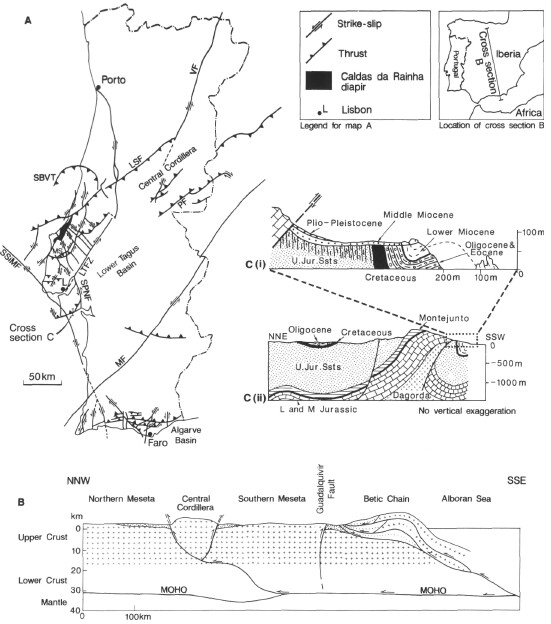Figure 8. Neogene tectonic structures in Portugal. A. Map of structures active in Portugal during the Neogene. The inset map of Iberia shows the location of B (from Ribeiro et al., 1990). LSF = Lousã-Seia fault; LTFZ = Low Tagus Fault Zone; MF = Messejana Fault; MS = Montejunto Structure; PF = Ponsul Fault; SBVT = Serra de Boa-Viagem Thrust; SPNF = Setúbal-Pinhal Novo Fault; SSiMF = Sintra-Sines-Monchique Fault; VF = Vilariça Fault. B. Sketch section showing the possible origin of the Central Cordillera as a pop-up structure linked to a detachment at the level of the Moho (from Ribeiro et al., 1990). C. Sketch sections showing the structure at the eastern end of the Arrábida hills. C (ii) shows the development of an asymmetric anticline above a reverse fault; the structure may have developed initially as a Mesozoic diapiric structure that was subjected to transpressional movements during the Miocene. C (i) is a detail of the eastern portion of C (ii) and shows stratigraphic relationships that indicate significant deformation around the early middle Miocene boundary. Dagorda: Late Triassic and Hettangian evaporites; Montejunto: Oxfordian carbonates. From Wilson et al. (1989).

![]()